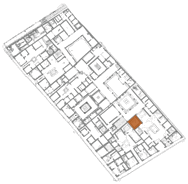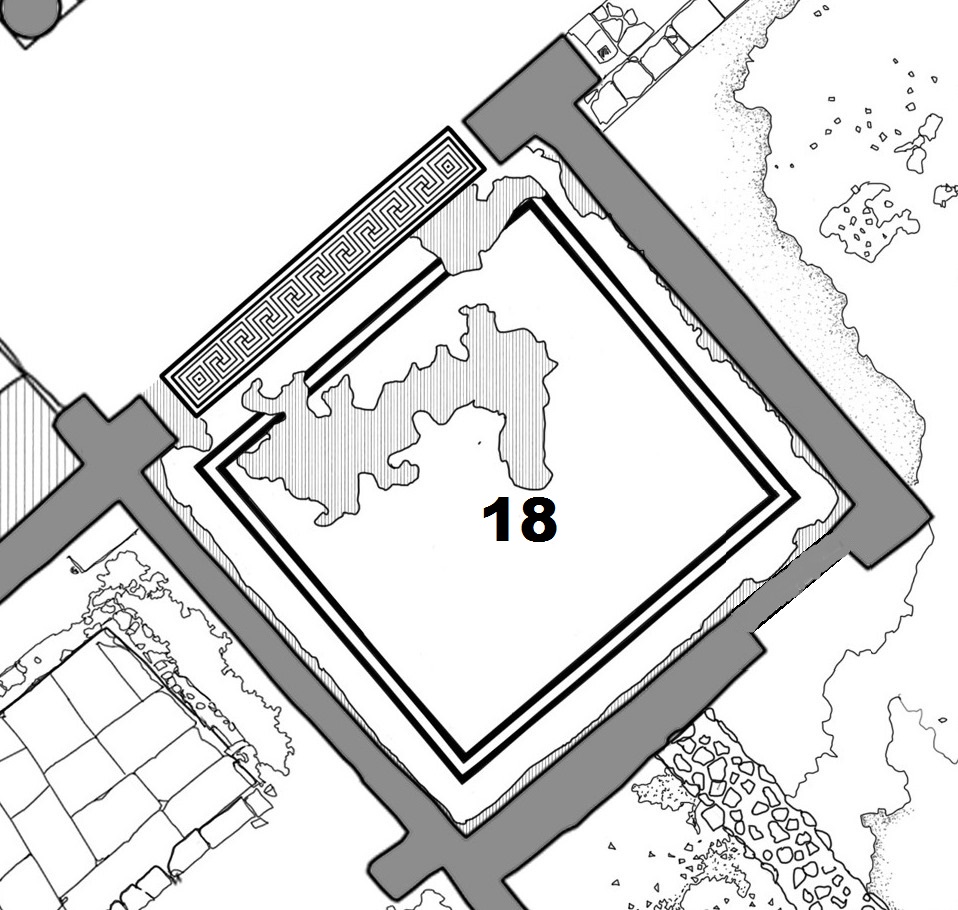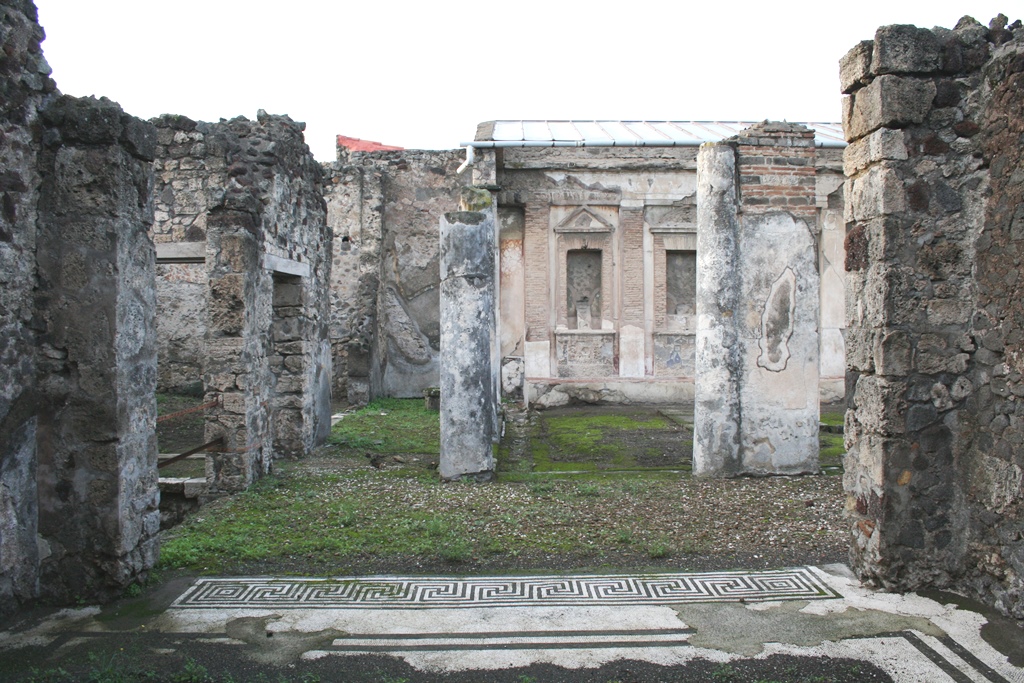Room 18 (triclinium)
Description
Thomas Staub
Room 18 opens up toward the peristyle in nearly its entire width. It probably served as a dining or banquette room, especially before the later added large room g was added to the west of the peristyle. Room 18 was originally oriented towards the atrium and was redirected towards the peristyle in connection with the later rebuilding's and Second-Style redecorations in the Late Republican period. Hardly anything is preserved of the decorations from that time (for a dating of these now nearly totally lost decorations, see Beyen 1960, 60f), only some lines and coloured dots are visible today. The floor is the only one in this house made of a black and white marble mosaic with a meander forming the border between this room and the peristyle. It must be either earlier or contemporary with the wall decorations, as some of the plaster layers forming the ground for the paintings cover it. Since the floor level of this room was raised in a secondary phase, probably associated with the Second-Style decorations, the pavement cannot be from an earlier phase. The walls are once more mostly constructed of the oldest type of incertum: in the lower parts it consists of lava, in the upper parts of Cruma set into a reddish mortar, only the closing off of the earlier door towards the atrium consisted of more mixed materials set into a yellowish mortar while the upper part of the east wall is modern reconstructions. High up on the west wall an earlier, round window that opened up towards the courtyard d of V 1,3 was closed up, using lava in a grey - yellowish mortar in a later phase. This sealed-off window is a further indication of the close relationship between these two entities already during the first phase of their history.
This part of the house was excavated between 1836 and 1838 (Pompeianarum Antiquitatum Historia vol. 2 (Fiorelli 1862, 329 - 353))
Dimensions: 5.25 m x 4.90 - 4.95 m = 25.83 m2.



